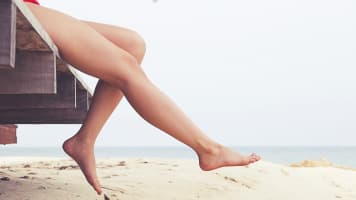
The Skinny
The heart and blood vessels work hard. Think about it, they spend a lot of time working against gravity and compensating for the minute changes that take place every second in our bodies and environments. When the blood vessels stop working exactly as they’re supposed to, there can be some minor and major issues. We’re going to focus on the minor, cosmetic issues that can occur when veins become less effective (learn more in our guide to Vein Concerns). In 2018, the American Society of Plastic Surgeons (ASPS) reported that over 300,000 vein procedures were performed. Chronic venous insufficiency leading to spider veins and varicose veins is a common condition that is treatable with safe, well-practiced, and effective solutions.
AEDIT
Before & After Images by Provider



Before & After Images by Provider
Vein Solutions
The Specifics
Who needs a vein procedure?
Let’s talk blood vessels. There are a few major types. Arteries carry oxygenated blood away from the heart to the body tissues. Veins carry deoxygenated blood from the body tissues back to the heart. Capillaries are the middle men connecting the arteries and veins where most particle exchange takes place. From a cosmetic perspective, we are focusing on the veins.
Veins (in most areas of the body) have to defy gravity to get blood moving up. To accomplish this they use contractions in the vein wall, contractions of surrounding muscles, one way valves, and, of course, the force generated by the heart.
When there are issues with any of these areas, venous insufficiency can develop leading to spider veins or varicose veins.
Some risk factors associated with the formation of spider veins and varicose veins include family history, age, gender, sedentary lifestyle, excess body weight, and pregnancy.
Women are twice as likely to develop venous issues due to hormonal changes during menstruation, pregnancy, and menopause. Pregnancy leads to increased blood volume, which can cause fluid buildup in the legs. Hormonal cycles in any female are correlated to changes in blood vessel walls that can contribute to spider veins and varicose veins.
What can you expect from a vein procedure?
Vein procedures will be dependent on the type and severity of your condition. Remember treatment for venous insufficiency always begins with a full medical evaluation by your provider to determine the underlying cause and rule out more serious conditions.
Once you have been diagnosed with spider veins or varicose veins, treatments for these conditions can include both at-home self care and professional interventions.
When should you seek a vein procedure?
The timing of treatment is mostly dependent upon the individual. In most cases, a medical evaluation followed by a trial of self care and lifestyle modifications is a good first step. When these treatments are not entirely effective, a professional procedure to treat spider veins and varicose veins is appropriate.
Why should you seek a vein procedure?
Always have venous abnormalities assessed by your medical provider. From a purely cosmetic perspective, seeking treatment for vein conditions can be both aesthetically and functionally beneficial. Vein treatments can function to remove the discolored, bulging appearance of these blood vessels, while simultaneously relieving possible discomfort or heaviness.
Cosmetic Procedures to Treat Veins
The following treatments for varicose and spider veins are selected depending on the severity of the condition. In milder cases, a provider may recommend an at-home treatment.
For Spider Veins
For Varicose Veins
At-Home Remedies
The Takeaway
Venous insufficiency is a relatively common condition. Many cases can be avoided or alleviated through good self care. In some cases, however, spider veins and varicose veins can develop and persist despite good lifestyle habits. Fortunately, a medical professional can work with you to eliminate the discoloration and bulging appearance of these veins improving your appearance and relieving any discomfort.







